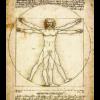If this tech breakthrough is substantiated it is a very important milestone and the importance of it cannot be overstated. Last month it was a molecular scale operational radio but this is really big for being so small; they have built a synthetic neuro chip capable of handling 16 computational processes more than a transistor and is smaller than the wavelength of visible light.
*IF* this pans out we could be seeing blue-brain scale computers the size of smart phones in ten years, twenty at the most.
The importance to building AI is incalculable and of course the very first reader comment was how it reminded them of Terminator.

The image demonstrates the design of an artificial brain built using a nano-brain reported in this issue of PNAS. Several molecular nano-brain are arranged in a way to work as powerful as our central nervous system. Numerical digits and alphabets float across the architecture demonstrating a matrix generated during a real-time operation similar to the Hollywood blockbuster The Matrix. Credit: Arindam Bandyopadhyay/ http://whatisthematrix. warnerbros.com/
Tiny Brain-Like Computer Created
By Charles Q. Choi, Special to LiveScience
http://www.livescien...n-machines.html
posted: 10 March 2008 5:00 pm ET
The most powerful computer known is the brain, and now scientists have designed a machine just a few molecules large that mimics how the brain works.
So far the device can simultaneously carry out 16 times more operations than a normal computer transistor. Researchers suggest the invention might eventually prove able to perform roughly 1,000 times more operations than a transistor.
This machine could not only serve as the foundation of a powerful computer, but also serve as the controlling element of complex gadgets such as microscopic doctors or factories, scientists added.
The device is made of a compound known as duroquinone. This molecule resembles a hexagonal plate with four cones linked to it, "like a small car," explained researcher Anirban Bandyopadhyay, an artificial intelligence and molecular electronics scientist at the National Institute for Materials Science at Tsukuba in Japan.
Duroquinone is less than a nanometer, or a billionth of a meter large. This makes it hundreds of times smaller than a wavelength of visible light.
The machine is made of 17 duroquinone molecules. One molecule sits at the center of a ring formed by the remaining 16. The entire invention sits on a surface of gold.
How it works
Scientists operate the device by tweaking the center duroquinone with electrical pulses from an extremely sharp electrically conductive needle. The molecule and its four cones can shift around in a variety of ways depending on different properties of the pulse — say, the pulse's strength.
Since weak chemical bonds link the center duroquinone with the surrounding 16 duroquinones, each of those shifts too. Imagine, for instance, a spider in the middle of a web made of 16 strands. If the spider moves in one direction, each thread linked to it experiences a slightly different tug from all the others.
In this way, a pulse to the central duroquinone can simultaneously transmit different instructions to each of the surrounding 16 duroquinones. The researchers say this design was inspired by that of brain cells, which can radiate branches out like a tree, with each branch used to communicate with another brain cell.
"All those connections are why the brain is so powerful," Bandyopadhyay said.
Since duroquinone possesses four cones, each molecule essentially has four different settings. Since the central molecule can simultaneously control 16 other duroquinones, mathematically this means a single pulse at the machine can have 4^16 — or nearly 4.3 billion — different outcomes.
In comparison, a normal computer transistor can only carry out just one instruction at once, and only has two settings — 0 and 1. This means a single pulse at it can only have two different outcomes.
Putting it to work
The idea is to hook this new gadget up with other molecules — either copies of itself or different compounds other scientists have invented. For instance, researchers have created a host of machines just a molecule or so large over the last decade or two — motors, propellers, switches, elevators, sensors and so on. The new invention might offer a way to control all those other compounds to work as a whole. Indeed, Bandyopadhyay and his colleagues revealed they could hook up eight other such "molecular machines" to their invention, working together as if they were part of a miniature factory.
This invention could serve as the controlling element of complex assemblies of molecular machines, Bandyopadhyay suggested. One future application for such assemblies "could be in medical science," he told LiveScience. "Imagine taking assemblies of molecular machines and inserting them into the blood, perhaps if you wanted to destroy a tumor inside the body."
The device currently is operated with an extremely sharp electrically conductive needle — specifically, that belonging to a scanning tunneling microscope, a bulky machine far larger than the 17 molecules in question. However, Bandyopadhyay hopes that in the future they can issue commands to their invention using molecules that deliver electric pulses instead.
The device needs to be made in vacuum conditions at extremely cold temperatures — about -321 degrees F (-196 degrees C). Bandyopadhyay said it could be operated at room temperature, however.
More powerful still
Bandyopadhyay added they could expand their device from a two-dimensional ring of 16 duroquinones around the center to a three-dimensional sphere of 1,024 duroquinones. This means it could perform 1,024 instructions at once, for 4^1024 different outcomes — a number larger than a 1 with 1,000 zeroes after it. They would control the molecule at the center of the sphere by manipulating "handles" sticking out from the core.
"We are definitely going to 3-D from 2-D immediately," Bandyopadhyay said.
Bandyopadhyay and his colleague Somobrata Acharya detailed their findings online March 10 in the Proceedings of the National Academy of Sciences.
Video: See How the Machine Works
Microbe and Machine Merged to Create First 'Cellborg'
Images: Micromachines

One-to-many communication is common in nature and can be re-created in machines.
Credit: Arindam Bandyopadhyay/ http://whatisthematrix.warnerbros.com/

















































